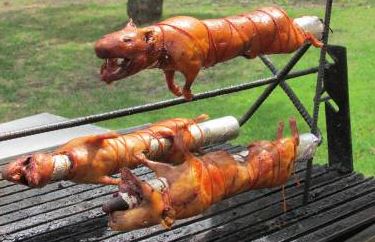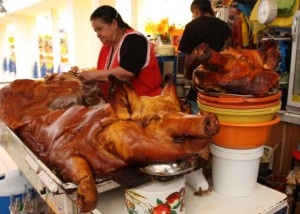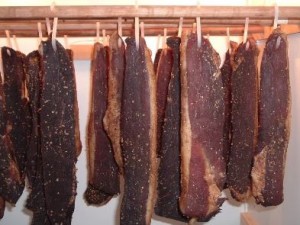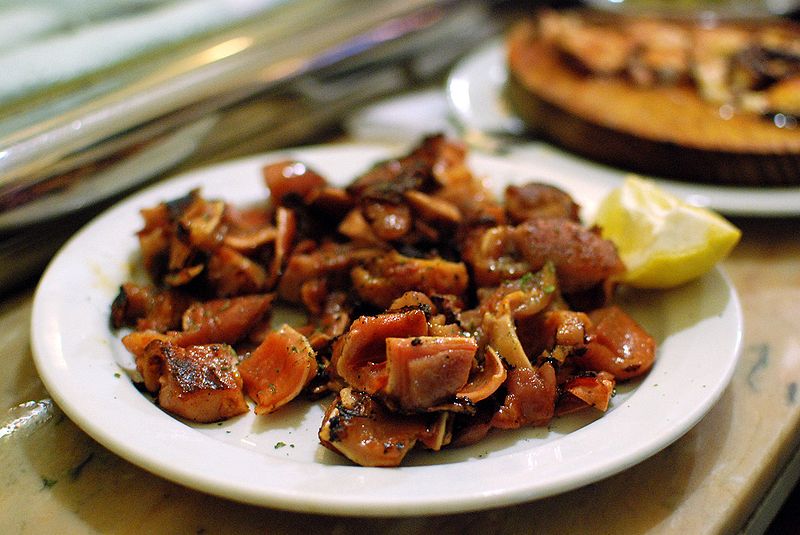[color-box color= “green”] Join Sebastian Torres Vallejo of Bayou Café as he explains the unique style of the local Cuenca cuisine. Explore the “intriguing gastronomic tradition” of cuy and learn about methods of cooking that “give life to food in a way not seen imitated anywhere else in the world.”
Food, other than language, is often one of the first ways that many expats experience their new culture. If you are planning a visit to Cuenca, you will have the chance to enjoy a “culinary world where most recipes… have been passed down… in an unbroken line from generation to generation.”[/color-box]
Experiencing Life Through Food
Often we travel around the world for business, pleasure, or in search of a place to retire. Sometimes we even have to move to different countries for work, like in my case. I have travelled and lived in different countries and cities around the world where I have had the opportunity to experience different cultures and, above all, culinary experiences that have increased my knowledge of food and further developed my palate. I have encountered different spices which created experiences that I would never have imagined. Nevertheless, having been born in Cuenca, Ecuador, I have grown up with local flavors which have their own unique style that define Cuenca cuisine giving life to food in a way I have not seen imitated anywhere else in the world.
Experiencing Cuenca delivers cuisine in a world that often amazes me because of the fact that most recipes and spices used in the food have been passed down in an unbroken line from generation to generation within families. My family is no exception to this tradition. It is a great honour to have access to the culinary learning and recipes of my grandmother and mother and, as a professional chef I have the ability to share a little of my native culinary traditions with the world.
Unique Cuenca Cuisine Traditions

What are those unique dishes that give Cuenca such an intriguing gastronomic tradition? One of the most traditional dishes is cuy, or roasted guinea pig. In this dish, a whole guinea pig is roasted over a wood and charcoal barbecue and seasoned with salt, garlic, cumin, melted pork fat, and achiote (a native Ecuadorian seasoning).
It is then slowly cooked and turned by hand. It takes around an hour to an hour and a half to cook. While it’s cooking, a brush is used to coat the cuy with the seasonings to keep it from drying out. Once it’s ready, it is served with braised potatoes in tomato sauce, boiled egg, and mote (mature corn from the cob). It is traditional after the meal to drink a canelazo so the meal does not upset your stomach. This is an old, proven custom.

Another traditional dish is hornado de cerdo (baked pork). In this recipe, a whole pig is baked in a wooden oven for several hours. The meat is seasoned with salt, garlic, and cumin. Normally, dry eucalyptus branches are put in the oven to infuse the pork with a mild, minty flavor. This dish is sold by the plate. The portion will change according to the amount you pay. It is usually served with an onion and tomato salad that has been soaked in lemon juice, llapingachos (potato cakes), and mote. As you may have noticed, mote, garlic, cumin, and salt are the most common ingredients used in Ecuadorian cuisine.
Best Places To Experience Cuenca Cuisine
Where is the best place to eat these dishes? My personal preference is to eat cuy in the Tres Estrellas Restaurant on Calle Larga and hornado in the market of Gualaceo where you will see mothers and daughters selling it. Normally, the same business practices are conserved for four or even five generations.

Each family here in Cuenca has its own recipes and special techniques, but these are the best known and the easiest to find. One of the most important aspects of the heritage of cuisine in this city is that families still have strong connections to food and it helps to strengthen familial bonds. The family gets together very frequently to cook their traditional ancestral recipes and to teach the new generations the culture and family values, as happens in many other countries in the world, but this is a tradition that has never been broken. I recommend trying the unique culinary tradition of this city and taking a trip back in time in order to become part of the Cuenca family.




















